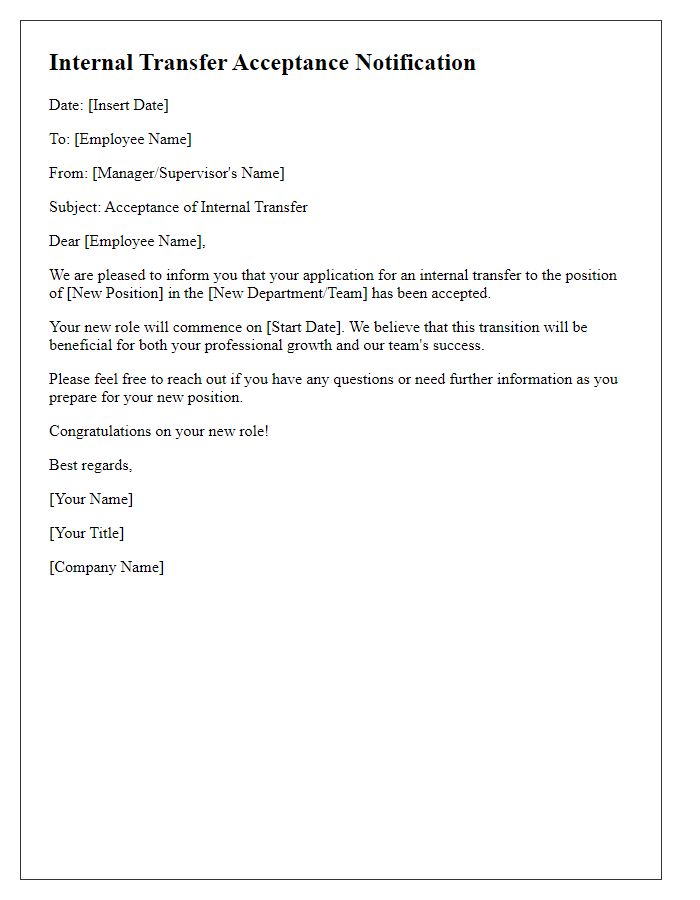Are you considering an internal transfer and unsure how to express your acknowledgment? Crafting the right letter can make all the difference in showing your professionalism and gratitude. An internal transfer acknowledgment letter is not just a formality; it's an opportunity to reflect on your journey and share your excitement for the new role. If you want to learn how to write a compelling letter that makes a lasting impression, read on for our step-by-step guide!

Subject Line
Successful internal transfers within large organizations, such as multinational corporations, often involve formal recognition to ensure employee morale and alignment with company culture. The subject line for such acknowledgment letters could include specific details related to the transfer, like the employee's name and the new position title. For instance, "Acknowledgment of Internal Transfer: [Employee Name] - [New Position Title]". This clarity aids in quick identification of the purpose and importance of the communication, fostering a sense of community and purpose within the workplace.
Employee Details
Acknowledging an internal transfer involves details about the employee and the new position. At XYZ Corporation, employee John Smith will transition from the Marketing Department to the Sales Division effective October 15, 2023. John joined XYZ Corporation three years ago, contributing significantly to various marketing initiatives that boosted brand awareness by 40%. His extensive experience in market analysis and client relations positions him effectively for the new role, where he aims to enhance sales performance through strategic outreach and customer engagement. The Sales Division, known for its dynamic team and high revenue generation, anticipates John's innovative approach will drive results.
Transfer Details
Internal transfers within large corporations often involve a detailed process that includes notifying relevant departments and acknowledging the changes in roles. Acknowledgment of such transfers is crucial for maintaining clear communication and ensuring a seamless transition. This may include details such as the employee's name, departure and arrival departments, new job title, starting date, and any changes in responsibilities. Additionally, it's beneficial to highlight the value this transfer brings to both the employee (career development, skill enhancement) and the organization (team restructuring, attracting talent). Ensuring that all stakeholders, such as HR managers, team leaders, and the employee themselves, are informed promotes collaboration and fosters a positive workplace culture.
Gratitude and Appreciation
Internal transfers within an organization often signify new beginnings and opportunities for growth. Employees transitioning to different departments or roles, such as from Human Resources to Marketing, deserve recognition for their adaptability. Appreciation should reflect on various aspects, including the skills they bring, their contributions in previous positions, and the support from colleagues throughout this process. Acknowledging the efforts of teams who assisted with the transition plays a vital role in fostering a positive workplace culture, enhancing employee morale, and encouraging collaboration across departments. Celebrating this change highlights the organization's commitment to personal and professional development.
Contact Information
Acknowledging an internal transfer involves recognizing the change in employment position or department within an organization. This transition can impact relationships, roles, and responsibilities. The communication should include specific details such as the new position title, effective date of the transfer, and the department involved. Acknowledgment may also touch upon the individual's contributions in their previous role and express enthusiasm for their new responsibilities. Personalizing the message by highlighting achievements can enhance staff morale and motivation. Additionally, including contact information such as phone numbers or email addresses ensures clear lines of communication for future collaboration and inquiries.













Comments